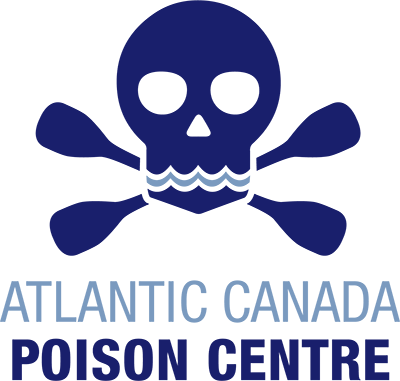
Atlantic Canada Poison Centre
Antidote Kit Manual
Naloxone Hydrochloride
Narcan®
Indications
- Reversal of opioid-induced respiratory depression, CNS depression, or hypotension.
NOTE: Anecdotally, may also reverse coma due to other CNS depressants (clonidine, valproic acid, benzodiazepines, ethanol).
Dosage
- IV Direct: 0.1 - 0.4 mg initially; repeat (if necessary) at 3 minute intervals.
- In opioid-dependent patients, start with lower doses (0.04 mg) to avoid withdrawal and titrate to effect.
- Onset is 0.5 - 2 minutes. Duration of action is variable and may be as short as 45 minutes or as long as 3 - 4 hours, and is partially dependent on the amount, type and route of opioid being reversed.
- If a cumulative and rapidly titrated dose of more than 10mg does not produce desired effect, assess the need for airway intervention and consider alternate diagnoses..
- Infusion: Give 0.2-0.4 mg/hour OR give 2/3 of effective IV direct dose per hour. Titrate to clinical effect. Infusions may be used when repeated bolus doses are required. Duration of action of opioids is often greater than that of naloxone; repeat bolus doses of naloxone may be necessary during the infusion.
- Alternate Routes of Administration: if intravenous route not available, may administer via the following routes: subcutaneous, intramuscular, intraosseous, intranasal. Injectable available as 0.4mg or 1mg per mL. Nasal spray available as 2mg or 4mg per 0.1mL.
Administration
- IV Direct: May administer undiluted over 30 seconds; Maximum concentration: 1 mg/mL.
- Infusion:
To prepare a standard concentration of 0.1 mg/ mL.
· add 5 mL of 0.4 mg/mL Naloxone to 15 mL of 0.9% NaCl. Total volume 20mL
OR
· add 2 mL of 1 mg/mL Naloxone to 18 mL of 0.9% NaCl. Total volume 20 mL
Infusion device is required.
Important Monitoring Information
- Since the degree of opioid reversal is dependent on the dosage, route and type of opioid that is being reversed, monitoring parameters must be prescribed by the physician.
- Patients should be monitored for recurrence of symptoms for 4 to 6 hrs after last dose of naloxone or after infusion stopped.
- Infusions may be weaned in 50% decrements. Patient should be monitored for recurrence of symptoms during weaning process.
Compatibility, Stability
- Compatible in dextrose 5% in water or sodium chloride 0.9%. Discard infusions after 24 hours.
- Protect from excessive light and store at room temperature.
Potential Hazards of Administration
- Severe withdrawal symptoms may be precipitated in opioid dependent patients.
- Hypersensitivity reactions.
- Nausea, vomiting or sweating.
- Use of larger than necessary doses in patients receiving opioids for analgesia may cause reversal of analgesic effects, prolonged blockade of opioid receptors and severe pain that is difficult to control.
- Possibility of elevated partial thromboplastin time.
- Hypertension, tachycardia, ventricular arrhythmias and pulmonary edema have been reported in postoperative patients, especially those with pre-existing cardiac disease.
Miscellaneous
- A pure opioid antagonist with little or no agonist activities.
References…
Bailey, B., Blais, R., Gaudreault, P., Gosselin, S., & Laliberte, M. (2009). Antidotes en toxicologie d'urgence (3rd ed.). Quebec, Canada: Centre antipoison du Quebec.
Goldfrank, L. R., Nelson, L. S., Lewin, N. A., Howland, M. A., Hoffman, R. S., (2015). Goldfrank's toxicologic emergencies(Tenth ed.). New York: McGraw Hill.
Gonzva, K., Brunet, B., Deniel, C., Benner, P., Toppin, F., & Brun, P. M. (2013). Case report: Early antidote use associated with noninvasive ventilation in prehospital treatment of methadone intoxication. The American Journal of Emergency Medicine, 31, 448.e5-448.e6.
Micromedex, T. H. A. (2014). Micromedex health care systems. Retrieved from http://www.micromedexsolutions.com
Olson, K. R. (2007). Poisoning & drug overdose (Sixth ed.). New York: McGraw Hill.
Phelps SJ, C. C. (2013). Teddy bear, pediatric injectable drugs. Retrieved from http://www.pharmpress.com/product/MC_PED/pediatric-injectable-drugs
Shannon, M. W., Borron, S. W., & Burns, M. J. (2007). Haddad and Winchester's clinical management of poisoning and drug overdose (Fourth ed.). Philadelphia: Saunders Elsevier.
Sullivan, R., Nelson, L. S., Duggineni, S., & Holland, M. (2013). Management of methylergonovine induced respiratory depression in a newborn with naloxone. Clinical Toxicology (Philadelphia, Pa.), 51, 47-49.
Trissel, Lawrence, A,. (2013). Handbook on injectable drugs (17th ed.). Bethesda, Maryland: American Society of Health-System Pharmacists
Wermeling, D. P. (2012). A response to the opioid overdose epidemic: Naloxone nasal spray. Drug Delivery and Translation Research, 3, 63-74.
Zuckerman, M., Weisberg, N., & Boyer, E. W. (2014). Pitfalls of intranasal naloxone. Prehospital Emergency Care, 18(4): 550-4.


